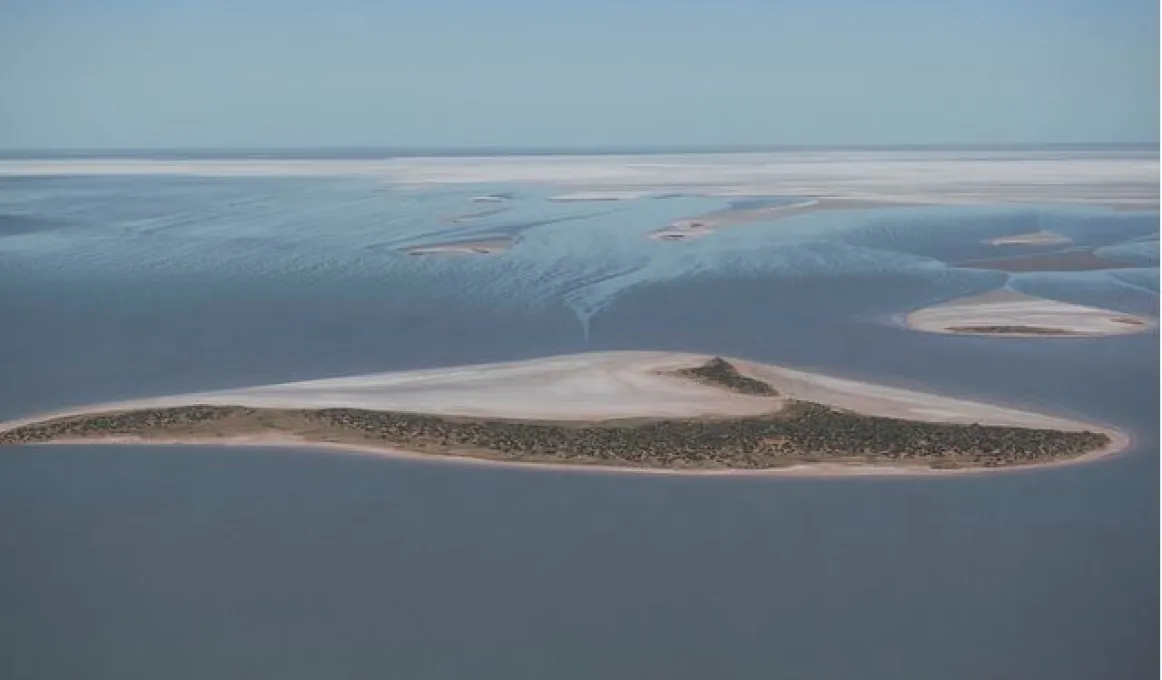Heavy rains have turned salt pans into lakes and brought more work for the Punmu Rangers

Record summer rains have greened the desert, turned salt pans into lakes, created breeding grounds for thousands of water birds from the Western Australian seacoast, and added to the duties of the Punmu Rangers of the Western Desert.
Record summer rains in the Western Desert region of Western Australia have turned salt pans into lakes and increased birdlife populations in a previously parched landscape.
With water levels in the salt pans at their highest level in 30 years, islands within the lakes have become breeding grounds for thousands of water birds, from the seacoast.
Healthy Country Coordinator, Gareth Catt from Kanyirninpa Jukurrpa (KJ), said the boom in bird life is based on the crustaceans and other invertebrates, such as brine shrimp, that hatch and grow rapidly in the lakes after rain.
“Seeing the desert at its greenest is amazing for the people that spend a lot of time out there,” Gareth said.
“The contrast is incredible. It’s been a privilege to be involved in this ranger program and see dry areas burst into life with the rain.”
However, the rains have also brought challenges for the Punmu Rangers.
“Firstly, the rain has made getting around very difficult. Roads are damaged and frequently cut off and many of the tracks we use to access remote country won’t be usable for months with so much water around,” Gareth said.
“The rain drives huge amounts of growth, so weed management becomes a high priority in lots of sites.”
With the increase in growth the risk of large and uncontrolled wildfire also comes and rangers will need to engage in extended prescribed burning later in the season as the land dries out.
“Then of course there is the extra survey work looking for animals that may have responded to the rain, be it through their nomadic patterns like the Banded Stilts or breeding quickly like the resident mammals and reptiles,” Gareth said.
Gareth joined an aerial survey of the wetlands organised by the Western Australia Department of Parks and Wildlife and the Indigenous Desert Alliance.
“The water was so vast that we felt like we were flying over the ocean. We have long thought that these lakes are significant breeding grounds for several birds, but they exceeded our expectations,” Gareth said.
The change in the landscape is yet another reminder of the two-way connection between rangers and their country.
“Spending time in remote locations with my workmates who are so connected to the country, and helping them see the difference they make to their landscape, is what drives me to work in the desert,” Gareth said.
Find out more
The Australian Government supports Indigenous communities to manage Indigenous Protected Areas (IPA) for land conservation and to create jobs for people in remote locations where there are limited employment opportunities.
Kanyirninpa Jukurrpa is part of the Indigenous Desert Alliance which is working with the Western Australian Department of Parks and Wildlife to document the breeding grounds in the lakes. The alliance also includes the Central Desert Native Service and the Central Land Council.